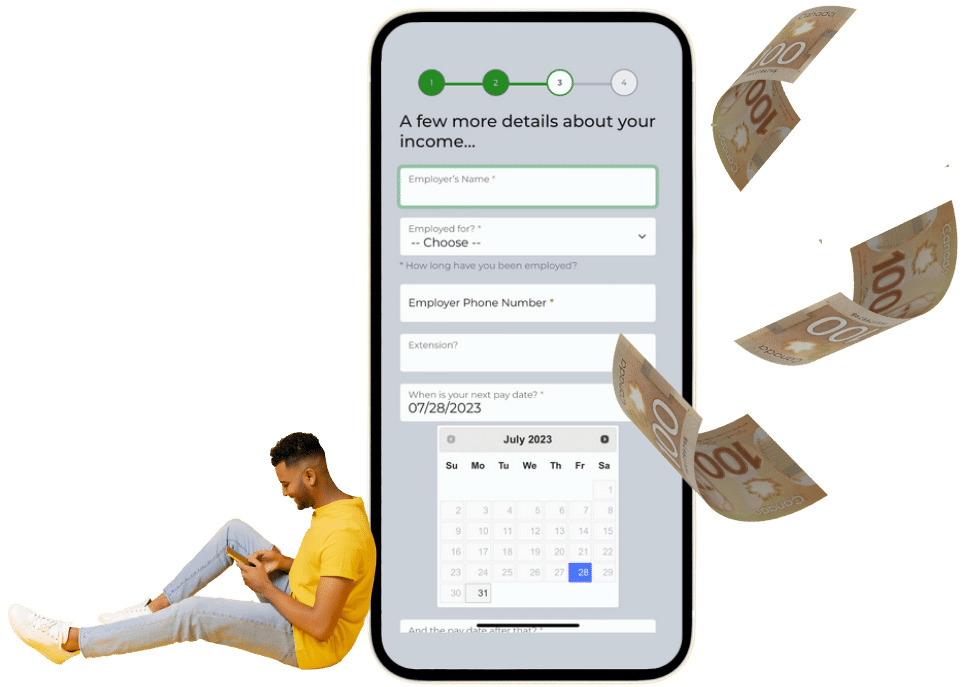Many Canadians are struggling financially. According to the MNP Consumer Debt Index, over half of Canadians are $200 or less from being unable to pay their bills and debt obligations each month. Meanwhile, according to another poll by Leger, about half report that they are living paycheque to paycheque.
If you’re struggling to save any money at the end of each month, you’re not alone. To help break the cycle of living paycheque to paycheque, consider the following tips.
1. Create a Budget
Let’s start with the basics: creating a budget. List your net monthly income and your typical expenses. Be realistic about your expenses. If you budget $100 toward groceries per month, that’s not a realistic estimate. The average person spends $300-400 per month on groceries. Your fixed expenses will likely include rent/mortgage payments, utilities, transportation, and groceries as well as occasional expenses. Don’t neglect the occasional expenses, like birthday gifts or Christmas gifts. Evaluate your variable expenses such as dining out or entertainment. Look for ways to lower your variable expenses. Redirect a portion of your income toward savings and/or debt repayment.
2. Increase Your Income
If your budget reveals that your income is simply not sufficient to cover your expenses, you need to increase your income. There are a few different ways you could achieve this.
One way is to take on a part-time job or weekend gig to supplement your income. Even a few hundred dollars of extra income per month can make a difference in some people’s financial lives.
In addition, you could potentially monetize a hobby or special interest that you have. This has never been easier, given social media and the Internet. For example, if you have an artistic inclination, you could look into selling your art online.
Finally, you might consider retraining for a new career. While this may seem daunting, there are more ways than ever to acquire new skills. You could attend online courses or bootcamps, watch tutorials, and read useful materials. Oftentimes, these resources are available for a small fee or even for free.
3. Reduce Unnecessary Expenses
Sometimes, the income is not the (only) issue. You may have too many frivolous expenses. For example, if you have a habit of purchasing a coffee every morning, you may wish to make your own coffee at home. These small savings may accumulate over months and years into thousands of dollars saved. Consistency is key.
Another tip: cancel any unused subscriptions. This could save you an additional amount every month.
Review any other pleasure spending, such as dining out or buying new clothes. Cooking at home is usually cheaper and healthier than going to restaurants. Thrift stores may offer high-quality clothing at a discount. Be creative!
Financial discipline requires commitment and the willingness to forgo certain pleasures and luxuries in service of a larger goal.
4. Consider Debt Consolidation
If you’re struggling with multiple different debts, consider debt consolidation. This may mean a single monthly payment – possibly at a lower interest rate – which may help lower your stress levels.
5. Get Professional Advice
Finally, you may wish to speak with a financial advisor. They may be able to provide individualized advice and encouragement.
Conclusion
At the end of the day, breaking the paycheque-to-paycheque cycle boils down to a math equation. You need to figure out where the budgeting mismatch lies, in terms of your income and expenses. Whether you work on increasing your income or reducing your expenses or both, commit to the long-term goal of improving your financial health. If you need a loan to help you bridge a cash shortfall between paycheques, apply online via Friendly Lender. We don’t check your credit score or credit report during our simple online application process, and you may have funds deposited directly into your bank account in as little as 24 hours!


